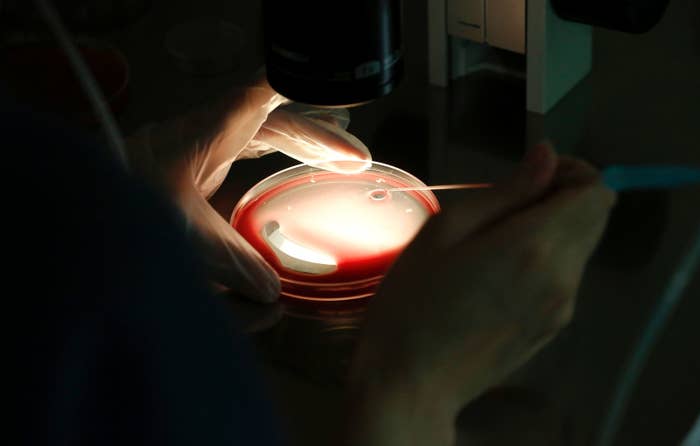
A baby born in April with DNA from three people became the first person to benefit from a controversial new procedure that allows parents with genetic mutations to have healthy children, according to a report published on Tuesday in New Scientist.
But this was not the first time a baby has been born with DNA from three people. In the 1990s, a handful of clinics in the US started performing a fertility procedure that resulted in more than a dozen "three-parent babies."
These procedures are useful in cases where the mother has mitochondrial disease and is trying to avoid passing it on to her baby.
That older method involved injecting a bit of a donor egg's cytoplasm — the ooze that makes up the bulk of the egg cell — into a mother's egg cell, before it was artificially inseminated with her husband's sperm. During the transfer, an unquantifiable amount of "mitochondrial DNA" from the donor egg was slurped up along with the cytoplasm and included in the mother's egg.
That method was developed by a fertility doctor, Jacques Cohen, at the Institute for Reproductive Medicine and Science at Saint Barnabas Medical Centre in New Jersey. But then the FDA intervened, and decided to regulate the mitochondrial transfer as an "investigational new drug," which was ultimately never approved.
Jeffrey Kahn, a professor of bioethics at Johns Hopkins University, told BuzzFeed News in an email that although Cohen's technique was the first to create three-parent babies, at that time it was not possible to tell how much genetic material was transferred. Also, the babies who were born from the procedure had a mix of mitochondrial DNA from two women.
With the new technique, in contrast, the baby got the mitochondrial DNA from the donor egg, and the normal, non-mitochondrial DNA from the mother. According to New Scientist, the baby's parents traveled to Mexico for the procedure, because it has been banned in the US. The scientist who performed it was John Zhang, founder and medical director of the New Hope Fertility Center in New York.
Many scientists world-over are testing this kind of transfer in egg cells and embryos, to eventually allow parents with mitochondrial diseases to have healthy children. The new case is the first report of the technique resulting in a healthy child.
"I think it was inevitable that it was going to happen outside the US because we are restricted here," Michio Hirano, a professor of neurology at the Columbia University Medical Center, told BuzzFeed News. Hirano has been researching a similar transfer technique, but cannot test it in people because Congress has banned the FDA from considering applications for such trials. Still, he said, "it’s very exciting news."
At the Oregon Health and Science University Center for Embryonic Cell and Gene Therapy, director Shoukhrat Mitalipov has also been waiting to test the procedure in embryos that can be implanted in people.
"Unfortunately, congressional action to block the FDA from approving this treatment threatens to prevent Americans from accessing cutting-edge reproductive technology, forcing desperate parents to countries with less oversight," Mitalipov said in an email to BuzzFeed News.
According to New Scientist, Zhang and his team are due to present the case at a meeting of the American Society of Reproductive Medicine in October. Without additional details, "it is not yet possible to comment," Dieter Egli, professor of developmental cell biology at Columbia University, wrote in an email to BuzzFeed News.
The UK greenlit research on this procedure on viable embryos in February of last year, and in the US, scientists are trying to continue doing research while minding laws that govern funding and research on embryos.
UPDATE
This post has been updated with comments from Shoukhrat Mitalipov.
UPDATE
This post has been updated with comments from Michio Hirano.
